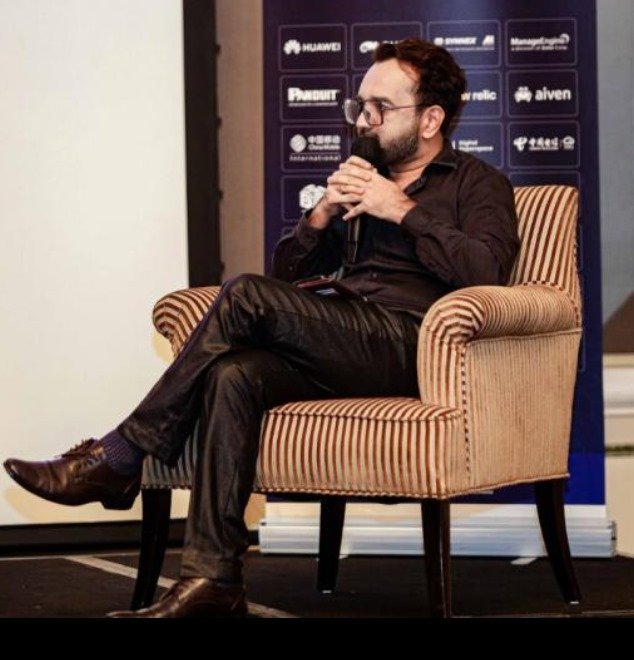Southeast Asia’s digital economy is on track to surpass $1 trillion by 2030, posing both opportunities and challenges for businesses in AI, health, and sustainability. In this discussion, Kailash Raghuwanshi, a seasoned business strategist, shares insights on how companies can navigate these sectors and turn obstacles into growth opportunities. With a decade of experience across Southeast Asia, Raghuwanshi emphasizes the need for strategic leadership in addressing these challenges
Southeast Asia is at a critical juncture. With its digital economy set to exceed $1 trillion by 2030, businesses across the region face unprecedented opportunities and challenges. From AI innovations to health sector reform, and the pressing need for sustainability, companies are navigating uncharted waters. But surviving and thriving in this fast-paced environment requires more than just innovation—it demands strategic leadership.
In an effort to understand more about the growth, complexities, and opportunities in Southeast Asia, we sat down with Kailash Raghuwanshi, a business strategist who has been deeply involved in the region’s growth and development. Known to many as “Kai,” he has witnessed firsthand the challenges businesses face as the market evolves and presents new hurdles, from digital transformation to sustainability demands.
Kailash Raghuwanshi brings a decade-long experience across Southeast Asia, the US, and China. As a New York graduate, his expertise spans leading fintech ventures in Indonesia, managing high-impact joint ventures in Vietnam, and gaining valuable experience as a Director at a Shanghai-based public health venture backed by the Gates Foundation. Kailash’s expertise spans multiple sectors. His ability to guide businesses through growth and change is informed by deep regional knowledge and hands-on leadership experience.
Question: What’s the biggest challenge for businesses in Southeast Asia today?
Kailash: It’s a blend of talent shortages, regulatory hurdles, and climate risk. Indonesia faces a shortage of 600,000 tech professionals annually, while Singapore needs to boost its digital talent pool by 55% by 2025. Climate change adds another layer of complexity, with 25% of the population vulnerable to flooding and other climate disasters. Companies need to be agile and have strong leadership to navigate these intersecting challenges.
Question: AI is a hot topic everywhere. How can businesses start integrating it?
Kailash: AI has the potential to revolutionize industries, but the key is starting small. 35% of businesses in Southeast Asia are already using AI to optimize operations, but those just beginning should focus on areas where AI can make an immediate impact—like streamlining logistics or using predictive analytics to anticipate consumer behavior. Once they see results, scaling AI becomes easier.
Question: As you have worked in health ventures, What are some of the biggest health challenges in Southeast Asia, and how do sustainability and waste management factor into them?
Kailash: Health challenges in Southeast Asia are complex, with 46% of the population lacking access to essential services. Sustainability plays a crucial role in addressing these issues—especially when it comes to waste management in healthcare. Improper waste disposal exacerbates public health risks and environmental degradation. Tackling these challenges requires innovative solutions, like using AI to manage resources efficiently, reducing waste, and ensuring healthcare services reach underserved populations. Businesses and governments need to collaborate to integrate sustainable practices into the health sector for long-term impact.
Question: Climate change is top of mind for everyone. What should businesses do to prepare?
Kailash: Climate resilience is no longer optional. It’s estimated that Southeast Asia’s GDP could drop by 11% by 2100 if we don’t act. Businesses need to integrate sustainability into their core strategies, using AI to predict climate risks, reducing carbon footprints, and building resilient supply chains. Companies that fail to take action now will find themselves behind the curve.
Question: What excites you the most about Southeast Asia’s future?
Kailash: The rapid transformation. By 2025, the region’s digital economy could account for 8.5% of GDP, and we’re seeing new opportunities in AI, health, and sustainability daily. Southeast Asia is uniquely positioned to leapfrog traditional development paths, adopting the latest technologies to drive growth and create solutions that can be exported globally.
A Path Forward: Navigating Growth in Southeast Asia
As Southeast Asia’s digital economy continues to accelerate, businesses face an exciting yet challenging future. Success will come to those who can balance innovation, sustainability, and adaptability. The region offers endless opportunities, but only for those ready to face the complexities head-on, with the right leadership in place.





